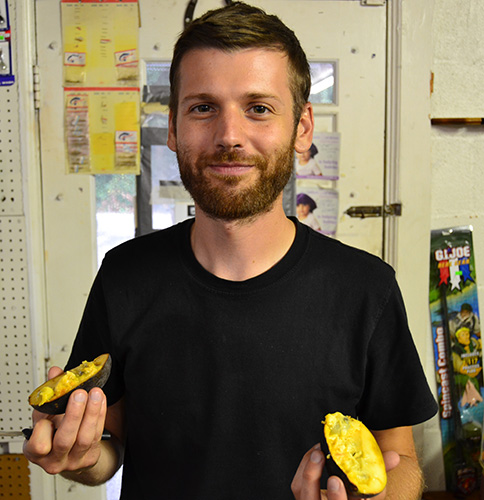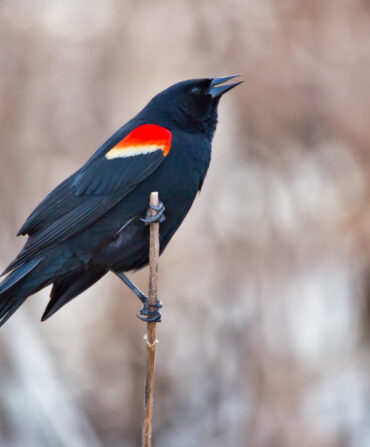Stretches of oak, hickory, and dogwood across the eastern half of the country hide a fruit that tastes more like a mango or a banana than the bittersweet blueberries or musky scuppernongs that grow nearby. Sticky and orange inside, the pawpaw is a cousin to the guanabana and cherimoya fruits sold on the street in more temperate parts of the world. Which is why it’s strange that this fall, thousands of pawpaws will rot on forest floors for lack of curious foragers.

Photo: Alice Crain under a Creative Commons Attribution 2.0
Pawpaw growing along the C&O Canal.
Andrew Moore ate his first pawpaw at the Ohio Pawpaw Festival in Albany, not too far from his hometown of Pittsburgh, but research trips for the new Pawpaw: In Search of America’s Forgotten Fruit took him everywhere from Mississippi to North Carolina. We talked with him about the often-overlooked native fruit that might soon be on its way to a restaurant near you.
People say that the pawpaw tastes like everything from mango to banana to vanilla and pineapple. What do you think it tastes like?
The common description is that it tastes like a cross between a mango and a banana, and that’s a good one. But there is a great diversity in flavor. Sometimes you’ll eat one that tastes a lot like a melon, and other times you’ll taste coconut or vanilla. It’s mild when freshly picked, and then caramel flavors take over as it ripens.
What do you do with pawpaws?
I just eat them, for the most part. I keep them in the fridge, or on the counter if they need to ripen. Then I cut them open and scoop out the pulp like it’s custard in a cup. You don’t get access to many pawpaws unless you’re one of a lucky few, so you probably want to savor them fresh. However, I do make a pawpaw ice cream that wins even the skeptics over. A few of the more fun things I’ve seen people make are beer, brandy, cheesecake, crepes… But I think some of the best things are yet to come. It’s still new in our kitchens.

Photo: Jonathan Yahalom
Author Andrew Moore.
Why do you think the pawpaw isn’t more mainstream?
Well, its shelf life is very short. But there are plenty of mainstream fruits that have a similar shelf life, and we still find ways to use them. Figs, for example. We make them work. The other short answer is that the cultures that came to this continent centuries ago had their own established agricultural systems and crops. Many of the native fruits and vegetables have been added slowly. Even the blueberry is only a hundred-year-old crop, in terms of widespread commercial cultivation. It could take a few breakthroughs like those the blueberry had to get the pawpaw to more people, but I do think it’s coming back. We let it go, and now we’re starting to pick it back up.
If we can’t find pawpaws in the woods, where can we buy them?
There’s a grower in Westminster, Maryland, who does mail order through a site called Earthy Delights. They aren’t cheap, but they’re worth it. A lot of the price is shipping.








